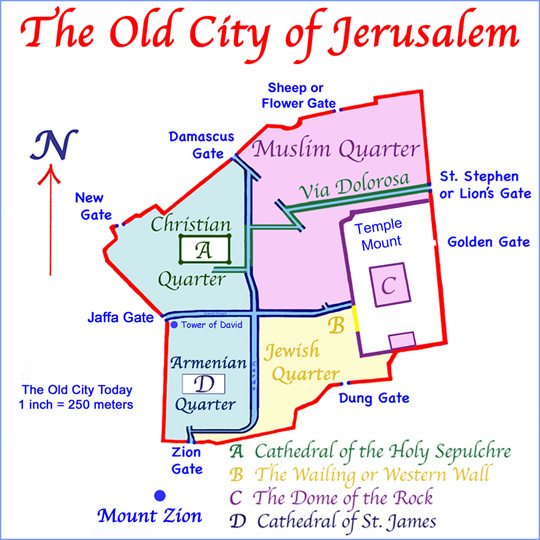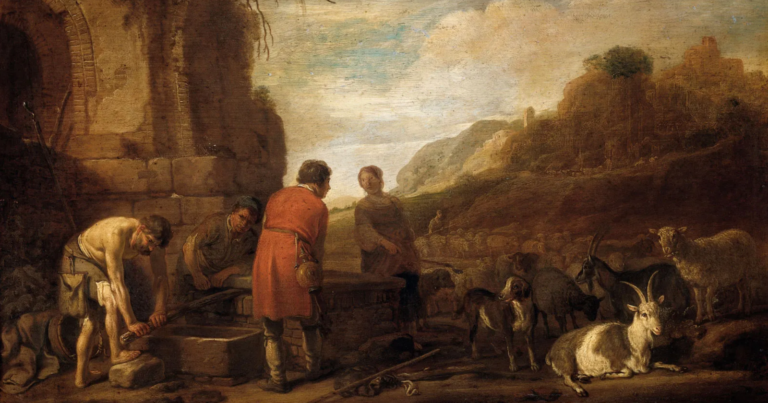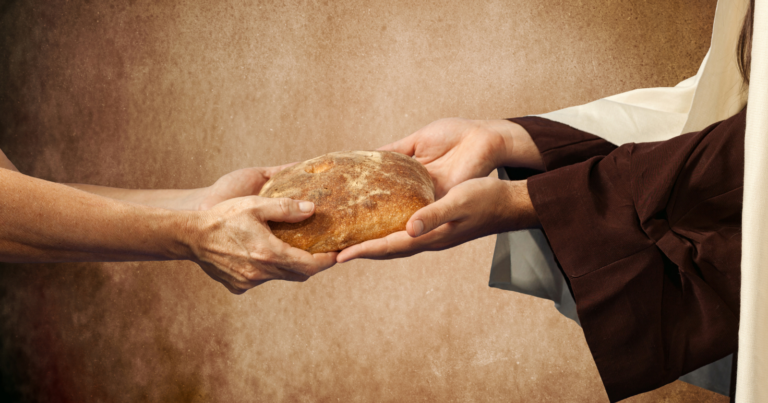Jerusalem is a city sacred to the world’s three major Abrahamic faiths.
It’s where history and holiness intertwine, offering a unique journey through the sacred narratives of Judaism, Christianity, and Islam.
Its streets echo the prayers of millennia, from ancient psalms to modern supplications for harmony.
In this article, we delve into how Jerusalem’s sacred history shapes your faith journey, exploring its deep roots in the Abrahamic faiths, pivotal historical transitions, and its role in contemporary spiritual and political landscapes.
We aim to bridge the gap between ancient scripture and modern application, demonstrating how Jerusalem’s past can illuminate your spiritual path today.
Jerusalem’s sacred history
Jerusalem, a city where the divine and earthly meet, stands as a testament to faith’s enduring power.
At its heart, this city encapsulates the spiritual journeys of three major Abrahamic religions: Judaism, Christianity, and Islam.
Its landscape, marked by synagogues, churches, and mosques against a backdrop of diverse languages, echoes a rich, complex history that spans millennia.
From its earliest mention in biblical texts to its pivotal role in modern religious and political contexts, Jerusalem’s story is one of faith, conflict, and coexistence.
Its story, deeply interwoven with the narratives of the Holy Scriptures, invites us on a journey through time, exploring the profound impact of sacred history on our modern faith.
Ancient foundations
Jerusalem’s story begins with its earliest mentions in the Bible, setting a profound historical and spiritual foundation.
Genesis records Abram’s migration to Canaan, underlining Jerusalem’s significance from humanity’s dawn.
Identified as Abram the Hebrew, he establishes an enduring connection with the land, further solidified through God’s covenant promising great nations from his lineage.
This bond is deeply engraved in Jerusalem’s soil, where Abraham purchased land to bury his wife Sarah, symbolizing the area’s lasting sacredness.
The narrative of the Israelites’ exodus from Egypt back to Canaan, led by Moses and Joshua, showcases Jerusalem as a central stage for divine intervention and fulfillment of promises.
The city first known as Salem, under King Melchizedek, evolves into a pivotal spiritual hub.
The battles led by Joshua against its kings and the eventual establishment of Jerusalem as the capital under King David and Solomon highlight its central role in Israel’s united kingdom and religious history.
Ancient foundations laid down in scripture — from the construction of the First and Second Temples to the Maccabean dedication n— highlight Jerusalem’s enduring role as a spiritual focal point.

Religious milestones of Jerusalem
1) The temples and their significance
The narrative of Jerusalem is incomplete without the mention of its temples, central to the Jewish faith and heritage.
- Solomon’s Temple: The First Temple, constructed under King Solomon’s reign, stood as a monumental symbol of the Jewish covenant with God. It was the primary worship site for the Israelites, housing the Ark of the Covenant.
- Second Temple: Rebuilt after the Babylonian exile with the support of King Cyrus of Persia, this temple reestablished Jerusalem as the spiritual center of Judaism. It was the heart of Jewish worship and pilgrimage until its destruction in 70 AD by the Romans.
- Herodian Temple: An expansion and renovation of the Second Temple by King Herod, this structure was a marvel of ancient architecture and the site of significant events in the life of Jesus, including His presentation and teachings.
These temples served not just as places of worship but as centers of judicial and cultural life for the Jewish people. Their destruction marked periods of mourning and diaspora, deeply affecting Jewish identity and religious practice.
Yet, the hope and promise of rebuilding have always been central to the Jewish faith, underscoring the enduring significance of these sacred sites in Jerusalem’s history.
2) Jesus Christ’s ministry
Jerusalem played a pivotal role in the life and ministry of Jesus Christ. It was here that Jesus, at the age of twelve, astounded scholars with His understanding.
Later, His visits to the city for Passover and the Feast of Dedication were marked by profound teachings and miracles, culminating in His lament over Jerusalem’s fate and His prophecy of its destruction.
The city was central to the fulfillment of His mission, serving as the backdrop for His crucifixion and resurrection, events that lie at the heart of the Christian faith.
Christ’s journey through Jerusalem encapsulates the essence of His teachings on salvation, love, and redemption, leaving an indelible mark on Christian history.
3) Islamic landmarks
Following the advent of Islam, Jerusalem emerged as a significant religious site for Muslims as well.
The Dome of the Rock, built on the Temple Mount, is a monument not only of Islamic faith but of architectural beauty, marking the place where Muhammad is believed to have ascended to heaven.
Nearby, the Al-Aqsa Mosque stands as one of Islam’s holiest sites, further embedding the city’s importance in Islamic tradition and worship.
These landmarks, alongside Christian and Jewish holy sites, highlight Jerusalem’s unique position as a city that bridges the histories and theologies of Judaism, Christianity, and Islam.
That’s what makes it a focal point for interfaith dialogue and understanding.
Kingdoms, conquests, and exiles
Jerusalem’s history is marked by periods of conflict and conquest, reflecting its strategic and spiritual significance.
Let’s take a look at the city under the sway of various empires:
1) Egyptian rule
The first non-biblical reference to Israelites comes from the Pharaoh Merneptah, marking an era of Egyptian prominence in the region. Their influence shaped the early socio-political landscape of Jerusalem and its surrounding territories.
2) Babylonian captivity
In 586 BC, the Babylonians, under Nebuchadnezzar, destroyed Solomon’s Temple and exiled the Jewish population, a pivotal moment that led to the Diaspora. This period of exile deeply influenced Jewish culture and religion.
3) Persian liberation
King Cyrus of Persia’s conquest of Babylon in 539 BC heralded a new era for the Jewish people. His decree allowed the exiles to return and rebuild the Temple, a move that revitalized Jewish life in Jerusalem.
4) Greek influence
Alexander the Great’s capture of Jerusalem in 332 BC introduced Hellenistic culture to the city.
Post-Alexander, the Ptolemies and Seleucids vied for control, influencing religious practices and leading to the Maccabean Revolt against Hellenistic oppression.
5) Roman dominion
Finally, the Roman Empire’s annexation brought architectural marvels and infrastructure, but also oppression and conflict. It was under Roman rule that Jesus Christ conducted His ministry, and the city saw significant Christian events unfold.
The Roman era culminated in the destruction of the Second Temple in 70 AD, marking another profound moment of loss for the Jewish people.
Islam’s imprint on Jerusalem
Islam left an indelible mark on Jerusalem starting in 638 AD, when Caliph Umar captured the city, ushering in a new era of Islamic influence.
The construction of the Dome of the Rock and the Al-Aqsa Mosque on the Temple Mount became symbols of this transformation, standing as lasting monuments to Islam’s rich legacy in Jerusalem.
Under Islamic rule, Jerusalem became a city where multiple faiths coexisted, with Christians and Jews practicing their religions under the protection and tolerance dictated by Islamic law.
This period redefined Jerusalem’s spiritual landscape, embedding Islamic traditions deep within the city’s historical and religious fabric.
Crusades to the Ottoman era
The Crusades marked a turbulent chapter in Jerusalem’s history, beginning in 1099 with the Christian Crusaders capturing the city.
This led to centuries of conflict, with control of Jerusalem oscillating between Christian and Muslim powers.
The city’s significance to Islam was further solidified when it fell under Ottoman rule in 1516, marking four centuries of Ottoman dominion that lasted until the British General Edmund Allenby’s entry in 1917.
The Ottoman era was characterized by relative peace and development in Jerusalem, preserving its status as a focal point for the Abrahamic religions while shaping its architectural and cultural heritage.
Modern Jerusalem: The quest for peace
In recent history, Jerusalem has faced numerous modern challenges, reflecting the ongoing complexity of coexistence within this ancient city.
The establishment of Israel in 1948 marked a significant turning point, leading to conflict and displacement that affect the region to this day.
Today, Jerusalem stands at the heart of political and religious disputes. It embodies the aspirations and struggles of both Israelis and Palestinians.
These days, efforts toward peace and reconciliation in Jerusalem are ongoing, with initiatives from various quarters seeking to promote dialogue and understanding among its diverse inhabitants.
The international community views the city’s status as a key issue in broader Middle East peace efforts.
Despite these challenges, Jerusalem continues to be a beacon of faith for millions worldwide. Its ability to inspire devotion across generations speaks to the enduring power of spirituality in human affairs.
The future of Jerusalem, while uncertain, holds the potential to become a symbol of unity and peace in a fragmented world.









